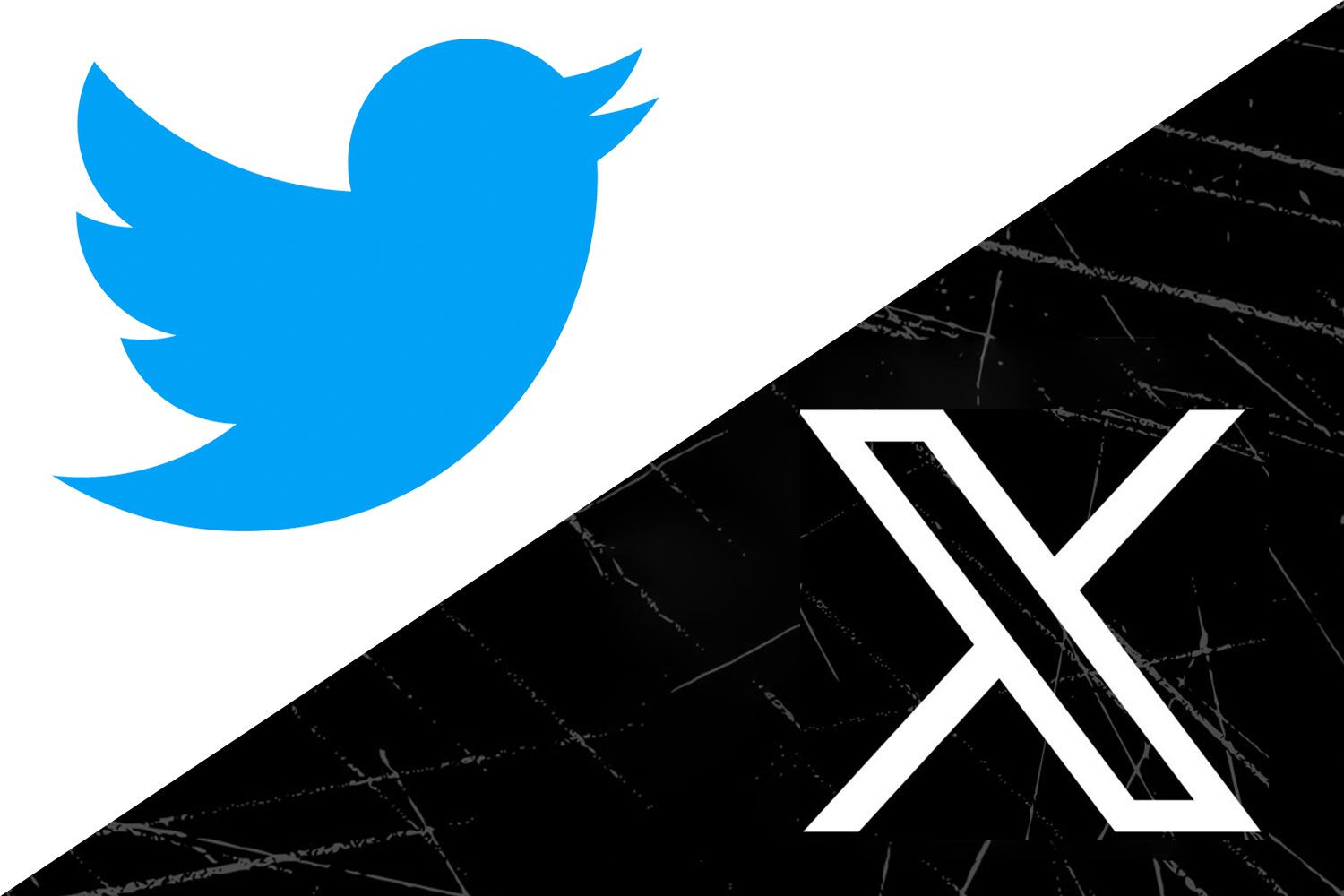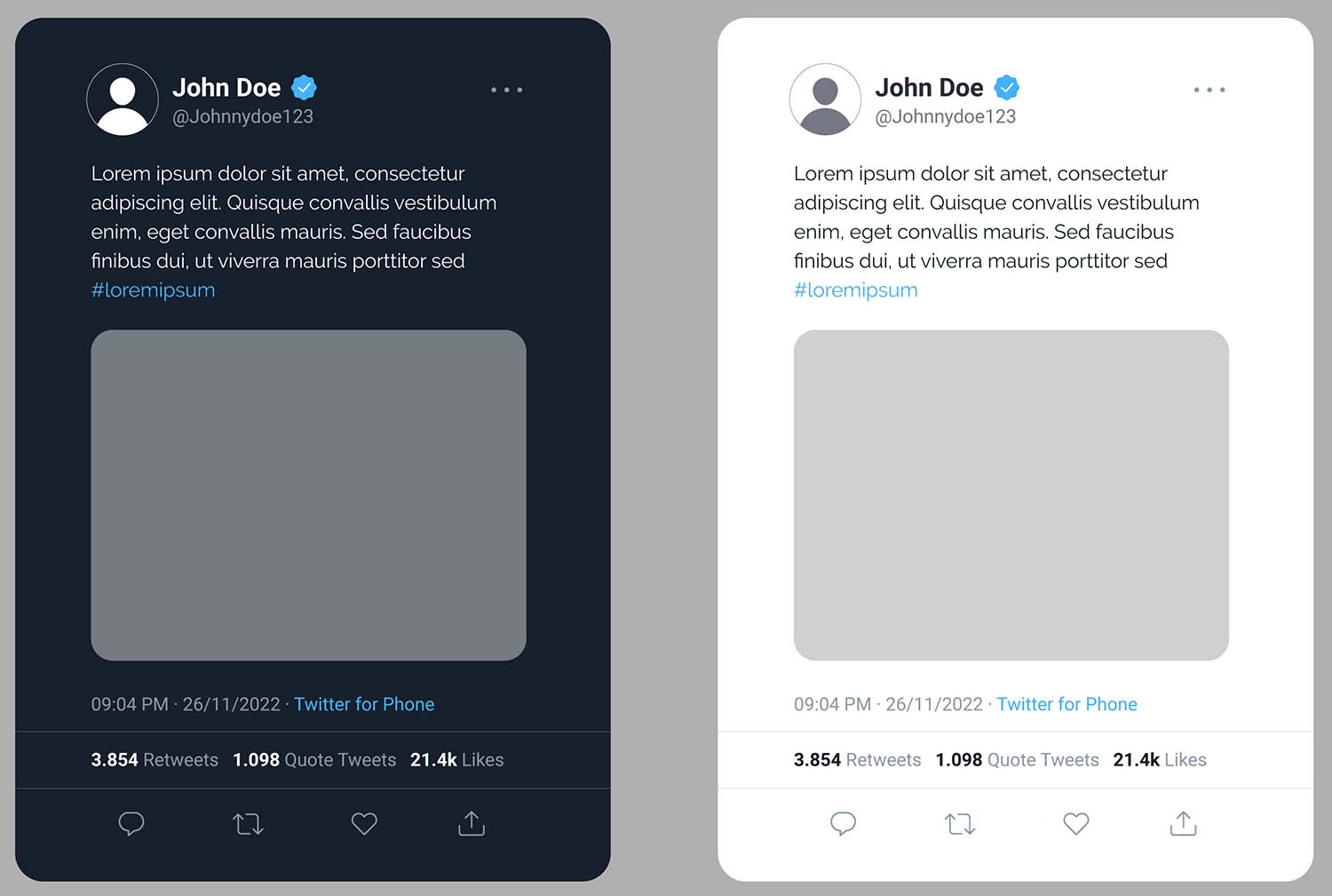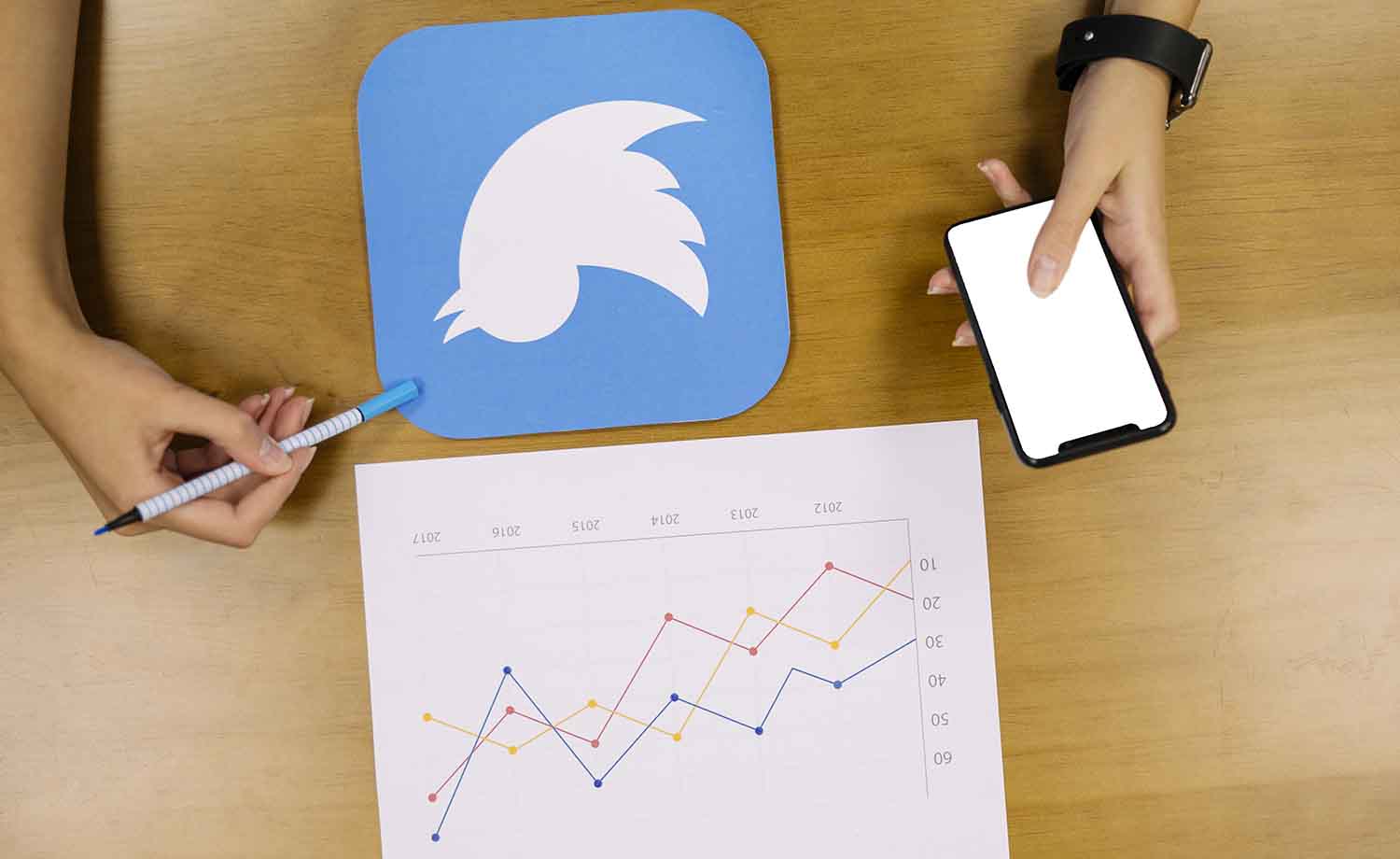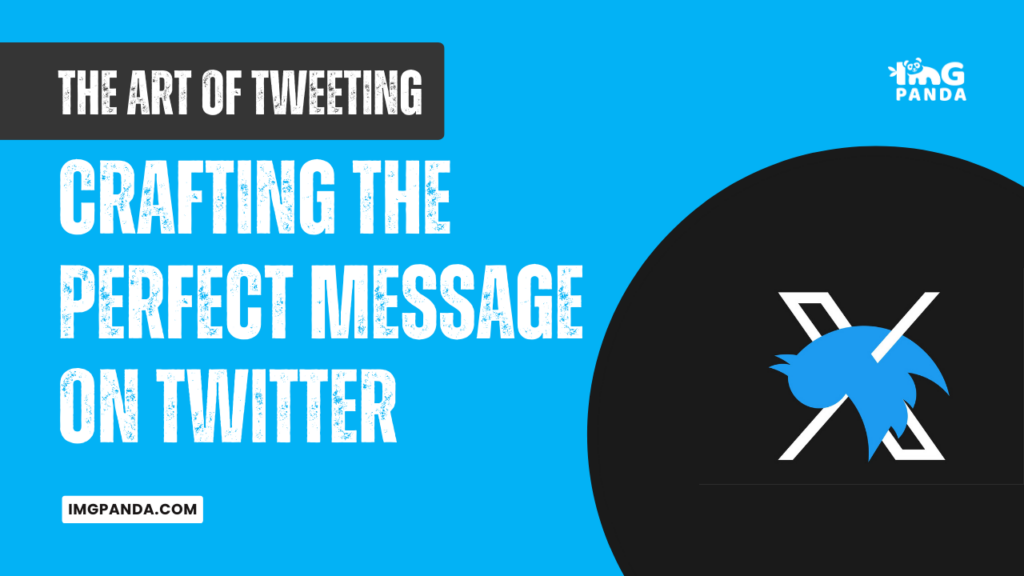Introduction
Social media has revolutionized the way people communicate and interact with each other, and Twitter is one of the most popular platforms used for sharing news, opinions, and ideas. Twitter has become a powerful tool for individuals and businesses to engage with their audience, build their brands, and promote their products and services. However, with the constant stream of information on Twitter, it can be challenging to capture your audience's attention and make your message stand out.
Crafting the perfect message on Twitter requires careful consideration of the audience, the content, and the platform's unique features and limitations. Whether you are an individual looking to build your personal brand or a business looking to expand your reach, it is essential to understand the art of tweeting and the strategies that can help you succeed on Twitter.
In this article, we will explore the art of tweeting and provide practical tips and strategies for crafting the perfect message on Twitter. We will discuss how to understand the platform's features and limitations, how to craft a compelling message that resonates with your audience, and how to avoid common mistakes that can hinder your success. We will also provide strategies for measuring your performance and optimizing your Twitter strategy to achieve your goals.
Also Read This: Can You Recover a Deleted Telegram Account
Understanding Twitter
Understanding Twitter is crucial to crafting effective messages that resonate with your audience and achieve your goals. Here are some key aspects of Twitter to keep in mind:
[caption id="attachment_192815" align="alignnone" width="1500"] Understanding Twitter[/caption]
Understanding Twitter[/caption]
Twitter Features and Jargon:
To use Twitter effectively, it's important to familiarize yourself with Twitter jargon such as retweets, likes, mentions, and hashtags. Retweets allow users to share other users' tweets with their own followers, while likes indicate appreciation for a tweet. Mentions allow users to tag other users in a tweet, and hashtags are keywords preceded by the pound sign (#) that can help categorize and organize tweets.
Twitter Audience and Culture:
Twitter's audience tends to be younger, tech-savvy, and politically engaged. Twitter users are also more likely to be urban, educated, and affluent than the general population. Twitter's culture tends to be fast-paced, with a focus on breaking news, real-time updates, and trending topics. Understanding the audience and culture of Twitter is crucial to crafting messages that resonate with your followers.
Crafting Messages for Twitter:
To craft effective messages on Twitter, it's important to tailor your content to the platform's unique features and limitations. Twitter has a 280-character limit, which requires brevity and concision in messaging. Visual elements like images, videos, and GIFs can help enhance your message and capture your audience's attention. Hashtags and mentions can help your message reach a wider audience and encourage engagement.
Overall, understanding Twitter's features, audience, and culture is key to crafting effective messages that achieve your goals on the platform.
Also Read This: Coloring Your World: How to Change Flaticon Colors
Crafting a Great Twitter Message
Crafting a great Twitter message requires careful consideration of the message's objective, the appropriate tone and voice, a compelling headline, concise and clear messaging, and effective use of hashtags and mentions. Here are some key strategies to keep in mind:
[caption id="attachment_192816" align="alignnone" width="1500"] Crafting a Great Twitter Message[/caption]
Crafting a Great Twitter Message[/caption]
Determining the Message Objective:
Before crafting a Twitter message, it's important to determine the objective of the message. Are you trying to promote a product or service, share news or updates, engage your followers in a conversation, or raise awareness about an issue? Understanding the objective of your message will help you craft messaging that aligns with your goals.
Selecting the Appropriate Tone and Voice:
The tone and voice of your Twitter message should align with your brand and messaging objectives. Are you trying to be humorous, serious, informative, or conversational? Understanding the tone and voice of your messaging will help ensure consistency across all of your Twitter messaging.
Crafting a Compelling Headline:
A compelling headline is essential to capturing your audience's attention and encouraging engagement. Your headline should be concise, clear, and attention-grabbing. Use strong verbs, ask questions, or make a bold statement to entice your audience to read more.
Keeping the Message Concise and Clear:
Twitter has a 280-character limit, which means that your messaging needs to be concise and clear. Avoid using complex language or jargon, and make sure your message is easy to understand. Use bullet points or short sentences to make your messaging easier to read.
Using Hashtags and Mentions Effectively:
Hashtags and mentions can help your message reach a wider audience and encourage engagement. Use relevant hashtags to categorize and organize your messaging, and mention other Twitter users to engage them in a conversation or to recognize their contributions to the topic.
Adding Visual Elements to Enhance the Message:
Visual elements like images, videos, and GIFs can help enhance your Twitter message and make it more engaging. Use high-quality visuals that align with your brand and messaging objectives, and make sure they are appropriate for your audience.
By following these strategies, you can craft compelling Twitter messages that align with your messaging objectives and capture your audience's attention.
Also Read This: How to Change a Baby Diaper Step-by-Step Guide
Strategies for Tweeting Success
To achieve tweeting success on Twitter, it's important to develop a strategy that includes posting frequency and timing, engaging with your followers and other users, using analytics to track performance, staying up-to-date with trends and news, and utilizing Twitter's paid promotional options. Here are some key strategies to keep in mind:
[caption id="attachment_192817" align="alignnone" width="1500"] Strategies for Tweeting Success[/caption]
Strategies for Tweeting Success[/caption]
Posting Frequency and Timing:
Finding the right posting frequency and timing is key to engaging your audience and increasing your reach on Twitter. Experiment with different posting schedules and monitor engagement rates to determine the optimal frequency and timing for your messaging.
Engaging with Your Followers and Other Users:
Engaging with your followers and other Twitter users is essential to building your brand and growing your audience. Respond to comments and questions, retweet and like relevant content, and participate in Twitter chats and conversations to establish yourself as an active and engaged member of the Twitter community.
Using Analytics to Track Performance:
Twitter provides robust analytics tools that can help you track the performance of your messaging and understand what's working and what's not. Use analytics to monitor engagement rates, follower growth, and audience demographics to optimize your messaging and reach your goals.
Staying Up-to-Date with Trends and News:
Twitter is a platform that moves fast, and staying up-to-date with trends and news is crucial to engaging your audience and maintaining relevance. Monitor trending topics, industry news, and current events to find opportunities to join the conversation and share timely messaging.
Utilizing Twitter's Paid Promotional Options:
Twitter offers a range of paid promotional options, such as Promoted Tweets, Promoted Accounts, and Promoted Trends, that can help you reach a wider audience and increase engagement rates. Experiment with different paid options to find the best fit for your messaging and budget.
By implementing these strategies, you can develop a comprehensive Twitter strategy that helps you achieve your goals and build your brand on the platform.
Also Read This: Design Custom Buttons Using Canva Button Template
Avoiding Common Twitter Mistakes
Avoiding common Twitter mistakes is crucial to maintaining a positive online presence and achieving success on the platform. Here are some common Twitter mistakes to avoid. Here is a video demonstrating the process of uncovering the nine essential components needed to create an ideal tweet.
Offensive or Insensitive Content:
Twitter is a public platform, and offensive or insensitive content can quickly damage your reputation and credibility. Avoid posting content that could be seen as discriminatory, abusive, or insensitive to certain groups.
Posting Too Frequently or Infrequently:
Finding the right posting frequency is key to engaging your audience, but posting too frequently or infrequently can also hurt your engagement rates. Experiment with different posting schedules and monitor engagement rates to find the right balance.
Failing to Engage with Followers:
Engaging with your followers and other Twitter users is essential to building relationships and growing your audience. Failing to respond to comments and questions, or neglecting to retweet and like relevant content, can damage your credibility and reduce engagement rates.
Neglecting to Proofread Messages:
Twitter messaging is often short and concise, but that doesn't mean it should be careless or contain errors. Neglecting to proofread your messaging can damage your credibility and reduce engagement rates.
Using Too Many Hashtags or Mentions:
While hashtags and mentions can help increase engagement and reach, using too many can be overwhelming and reduce the clarity and impact of your messaging. Use hashtags and mentions strategically and sparingly.
Failing to Respond to Negative Feedback:
Negative feedback is inevitable on social media, but failing to respond can damage your reputation and reduce engagement rates. Respond to negative feedback in a professional and respectful manner to demonstrate your commitment to customer service and maintaining positive relationships with your audience.
By avoiding these common Twitter mistakes, you can maintain a positive online presence and achieve success on the platform.
Also Read This: Exploring Additional YouTube Features and Their Uses
Pros and Cons
here is a table summarizing the pros and cons of the art of tweeting and crafting the perfect message on Twitter:
| Pros | Cons |
| Increased Engagement | Limited Message Length (280 characters) |
| Improved Brand Awareness | Fast-paced and Ever-changing Platform |
| Real-time Communication | Risk of Offending or Alienating Followers |
| Analytics Tools | Difficulty in Standing Out |
| Cost-effective Marketing | Information Overload |
Also Read This: Effective Dailymotion Workout Routines to Quickly Lose Belly Fat
FAQs
What is the ideal length for a Twitter message?
Twitter allows messages up to 280 characters, but the ideal length will depend on your messaging objectives and audience. Aim for concise and clear messaging that is easy to understand.
How can I increase engagement rates on Twitter?
Increasing engagement rates on Twitter requires a combination of crafting compelling messages, posting at optimal times, using relevant hashtags and mentions, engaging with your followers and other Twitter users, and monitoring performance through analytics.
What are some common mistakes to avoid on Twitter?
Some common mistakes to avoid on Twitter include posting offensive or insensitive content, neglecting to engage with your followers, using too many hashtags or mentions, and failing to proofread your messaging.
What are some effective strategies for measuring performance on Twitter?
Twitter provides robust analytics tools that can help you track engagement rates, follower growth, audience demographics, and other metrics. Use analytics to optimize your messaging and achieve your goals on the platform.
Should I use Twitter's paid promotional options?
Twitter's paid promotional options can provide a cost-effective way to reach a wider audience and increase engagement rates. Experiment with different paid options to find the best fit for your messaging and budget.
How can I stand out on Twitter's fast-paced platform?
To stand out on Twitter, craft messaging that is unique, attention-grabbing, and tailored to your audience and messaging objectives. Utilize visual elements, like images and videos, to enhance your messaging and make it more engaging.
Conclusion
In conclusion, the art of tweeting and crafting the perfect message on Twitter requires a combination of creativity, strategy, and an understanding of the platform's unique features and limitations. By following the strategies outlined in this article, including determining your messaging objectives, selecting the appropriate tone and voice, crafting a compelling headline, keeping your messaging concise and clear, and using hashtags and mentions effectively, you can create messaging that resonates with your audience and achieves your goals on the platform.
In addition, to achieve tweeting success on Twitter, it's important to develop a comprehensive strategy that includes posting frequency and timing, engaging with your followers and other users, using analytics to track performance, staying up-to-date with trends and news, and utilizing Twitter's paid promotional options.
By avoiding common Twitter mistakes, such as posting offensive content, neglecting to engage with your followers, and using too many hashtags or mentions, you can maintain a positive online presence and achieve success on the platform.
Ultimately, Twitter is a powerful tool for individuals and businesses alike to connect with their audiences, share their messaging, and build their brands. By understanding the platform's unique features and audience, crafting compelling messaging, and developing a comprehensive strategy, you can achieve your goals on the platform and reach a wider audience than ever before.
